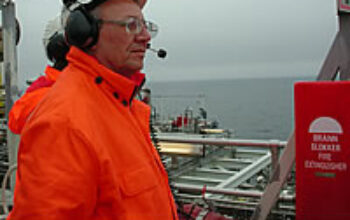Sonofusion, often portrayed as a potential revolutionary method for achieving nuclear fusion, has captured the imaginations of researchers and laypersons alike. The methodology primarily revolves around the implosion of bubbles in a liquid medium, which ostensibly results in extreme temperatures and pressures coinciding with the conditions favorable for fusion reactions. However, the narrative surrounding sonofusion has oscillated from exhilarating potential to sobering skepticism. This article endeavors to dissect the multilayered discourse surrounding sonofusion by interrogating its scientific underpinnings, the mechanisms of bubble dynamics, and the ongoing debates regarding its efficacy.
At the heart of sonofusion is the phenomenon known as cavitation. Cavitation occurs when a liquid is subjected to rapid changes in pressure, leading to the formation of vapor-filled cavities or bubbles. These bubbles undergo cycles of expansion and contraction when exposed to ultrasonic sound waves, creating environments of extreme thermodynamic conditions. When these bubbles collapse, they can theoretically achieve temperatures reaching millions of degrees Celsius, along with consequential pressures. This creates an environment reminiscent of the core conditions found in stellar bodies, thus tantalizing physicists who seek to harness fusion energy.
Central to the exploration of sonofusion is the concept of the so-called “bubble burst.” As the bubbles rapidly collapse, they release a significant amount of energy in a brief yet intense event. The energy density at the moment of bubble implosion is hypothesized to be sufficient to induce nuclear reactions, specifically deuterium-deuterium fusion. However, preliminary experimental results have raised numerous questions regarding the reproducibility and reliability of the reported findings. Despite initial enthusiasm, subsequent investigations have led to a chorus of skepticism within the scientific community.
The narrative surrounding sonofusion reflects a broader trend in scientific inquiry where groundbreaking claims require rigorous validation. Early studies, often lauded for their ambitious claims, provided promising data—anomalous heat generation, for instance. However, these findings were not devoid of controversy. Subsequent attempts to replicate such results consistently failed, prompting concerns regarding experimental rigor and data integrity. The scientific method necessitates replicability, and the inability to duplicate results plays a pivotal role in shaping the trajectory of research funding and interest.
Beyond the immediate scientific concerns, sonofusion presents an illustrative case study on the interplay between hype and reality in contemporary physics. Public perception often lags behind scientific discussion, leading to a discord between what is presented in popular media and the nuanced understanding required by the scientific community. While the theoretical framework for sonofusion may appear to offer a tantalizing glimpse into the future of energy production, the pathway to practical application remains laden with uncertainty. Analysts have noted that the allure of “cheap and abundant energy” can obscure more pragmatic discussions about the viability of such technologies.
Additionally, interdisciplinary approaches must be considered when discussing sonofusion. The intersection of acoustic physics, fluid dynamics, and nuclear physics presents a complex tapestry of challenges. Investigating the cavitation dynamics necessitates sophisticated computational models coupled with high-resolution experimental setups. Such interdisciplinary frameworks are not merely beneficial; they are essential in advancing understanding and potentially validating empirical claims. Critical analysis of prior experiments underscores the necessity for knowledgeable collaboration across specialties to devise stringent methodologies that can address existing gaps.
Another dimension to consider is the ethical implications of pursuing sonofusion technology. Should the scientific community galvanize resources to explore this avenue, it raises questions regarding funding allocation. Research efforts must contend not only with ensuring scientific integrity but also with confronting the moral responsibilities of directing finite resources towards speculative technologies. The potential for societal impact—be it through the promise of clean energy or through unforeseen consequences—mandates robust discussions on oversight and ethical research practices.
Moreover, the broader context of fusion research provides a contrasting backdrop to the sonofusion narrative. Member organizations engaged in more conventional fusion endeavors, such as magnetic confinement fusion through tokamaks and inertial confinement principals, have established a more robust theoretical and experimental framework. The stark differences in funding, public perception, and scientific consensus signify the hurdles faced by sonofusion advocates seeking legitimacy in a competitive landscape. The promise of nuclear fusion as a clean and sustainable energy source is compelling, yet sonofusion’s place within this narrative remains tenuous.
At present, sonofusion stands at a critical juncture. Its theoretical foundations captivate interest while the empirical realities invoke caution. As researchers continue to explore the ramifications of bubble dynamics and energy release, the discourse surrounding sonofusion must evolve to embrace both aspirations and limitations. The quest to validate such groundbreaking claims necessitates enhanced scrutiny and an unwavering adherence to scientific principles, bridging the gap between exploratory potential and grounded application. In reflection, the journey of sonofusion from hypothesis to scrutiny illustrates the evolving narrative of scientific discovery, wherein hype inevitably encounters the steadfast resilience of empirical validation.
In conclusion, sonofusion serves as a telling example of how scientific intrigue can generate both excitement and skepticism. The road from theory to reality is often fraught with ambiguity, necessitating meticulous research and ethical scrutiny. As physicists delve deeper into the cavitation phenomena and the intricacies of bubble dynamics, the lessons learned from the sonofusion discourse invariably add to the rich tapestry of scientific endeavor.






